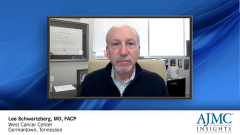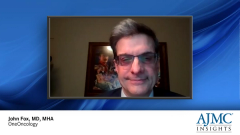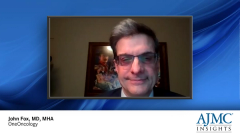
CIN Prophylaxis: Treating With G-CSFs
Limitations and other factors to consider when utilizing granulocyte colony-stimulating factors as prophylaxis for chemotherapy-induced neutropenia.
Episodes in this series

Lee Schwartzberg, MD, FACP: While colony-stimulating factors like G-CSF [granulocyte colony-stimulating factor] have revolutionized the approach to chemotherapy-induced neutropenia [CIN] and febrile neutropenia by giving us an effective prophylaxis, it’s not perfect. First of all, for the more myelosuppressive regimens, its use in reducing neutropenia is about a 50% reduction. As the myelosuppression goes down, it tends to be more effective, but even in regimens that are not considered in the high-risk range, in some patients receiving G-CSF support, they still get febrile neutropenia. It’s not 100% effective by any means. And again, as the myelosuppression risk goes up in general, the ability of current dosing of G-CSF tends to be less effective.
In addition, G-CSF is not given on the same day as a chemotherapy administration, and the standard is to give it between 24 and 72 hours after the chemotherapy. That in some cases necessitates an additional visit for the patient to get the growth factor, although there are devices that can be put on the patient’s body to administer the dose about a day later.
Also, and importantly, there are [adverse] effects with G-CSF administration, and the No. 1 [adverse] effect is bone pain. This is an on-target effect because what the G-CSF is doing is stimulating the myeloid precursors in the bone marrow, and as they start to expand, they can cause bone pain.
Many clinicians prescribe a long-acting antihistamine, to be taken daily with the G-CSF or afterwards for several days after the cycle. While anecdotally that’s been shown in some cases to help the bone pain, it’s never been proven to my knowledge in a randomized, double-blind, placebo-controlled study to actually work. We do it because it’s low risk, but it clearly does not help a lot of people. A lot of people still have bone pain, and our patients come in sometimes with severe bone pain even to the point where they might need narcotics or even refuse the chemotherapy at full dose with the G-CSF in the next cycle because it was so severe.
This is a remaining issue that needs to be solved. Finally, there are patients, as I mentioned, who still get CIN despite getting appropriate growth factor prophylaxis with G-CSF either long acting or daily standard filgrastim, and those patients need more protection than the current standard will deliver.
Newsletter
Stay ahead of policy, cost, and value—subscribe to AJMC for expert insights at the intersection of clinical care and health economics.



























































